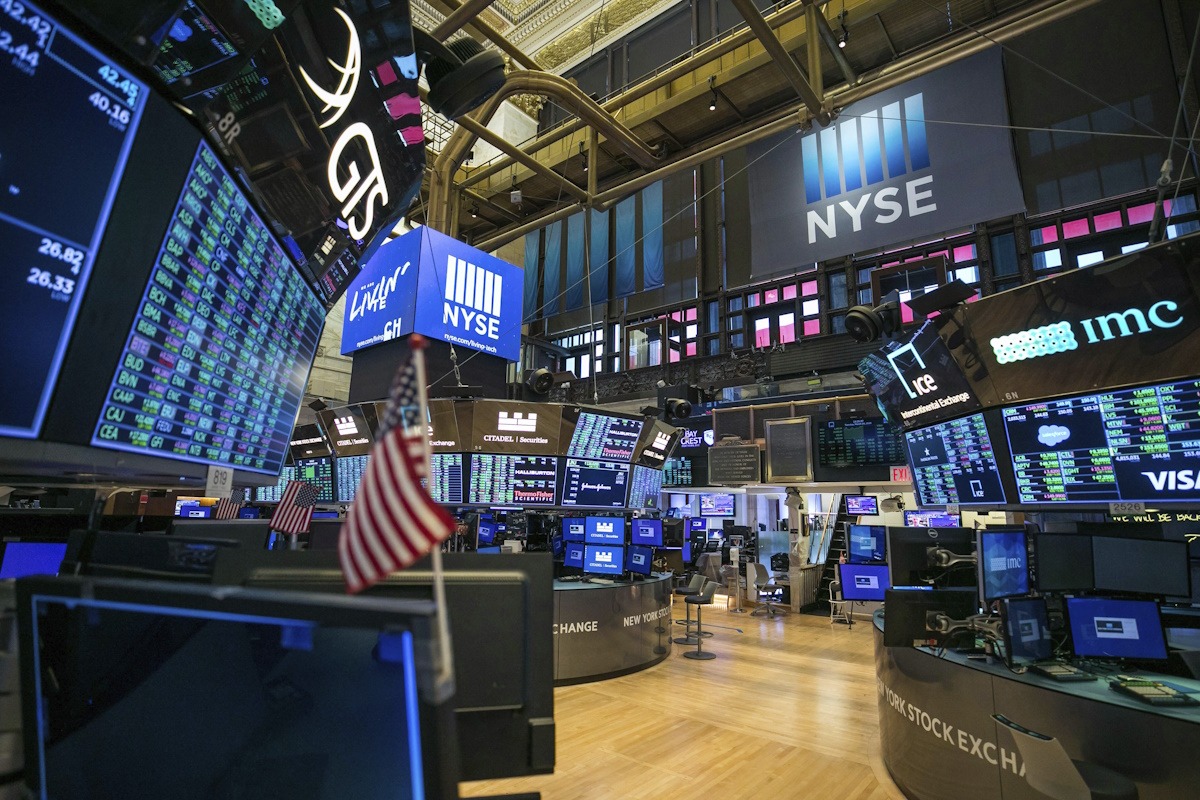
The major U.S. index futures are indicating a lower open on Monday, suggesting that stocks may retreat after their upward movement in the last two sessions. Profit taking could lead to early weakness, as certain traders aim to capitalize on the recent market strength. The increase observed at the end of the previous week propelled the major averages to achieve new record closing highs on Friday, following the Federal Reserve’s anticipated decision to reduce interest rates by a quarter point.
The decline in market’s performance follows the announcement from the White House regarding President Donald Trump’s signing of a proclamation aimed at limiting the entry of specific H-1B aliens as nonimmigrant workers into the U.S. The White House announced that new H-1B applicants will be mandated to pay a fee of $100,000, a measure aimed at “curbing abuses that displace U.S. workers and undermine national security.” AJ Bell stated that “Investors will be watching closely for any fall-out in the technology sector from the sharp rise in H1-B visa fees – affecting skilled foreign workers. The news generated some initial uncertainty regarding its implications for current visa holders. Although this concern has been clarified and confirmed as a one-time fee, it may still exert a considerable influence on tech firms.”
Overall trading activity may be somewhat subdued, as traders anticipate the upcoming release of key U.S. inflation readings and remarks from several Fed officials, including Fed Chair Jerome Powell. Stocks experienced a predominantly upward trend during Friday’s trading, building on the gains recorded in Thursday’s session. The persistent upward trend has led to all major averages achieving new record closing highs. The major averages achieved new peaks late in the session, only to relinquish some of those gains as the market approached the close. The Nasdaq increased by 160.75 points, representing a 0.7 percent rise, reaching 22,631.48. The S&P 500 saw an uptick of 32.40 points, or 0.5 percent, closing at 6,664.36. Meanwhile, the Dow gained 172.85 points, equivalent to a 0.4 percent increase, finishing at 46,315.27. During the week, the Nasdaq, which is heavily weighted in technology stocks, experienced a notable increase of 2.2 percent. In comparison, the S&P 500 and the Dow also saw gains, rising by 1.2 percent and 1.1 percent, respectively. The ongoing resilience can be attributed in part to a sustained upward trend, contributing to the major indices reaching new all-time highs.
Although September is generally regarded as the most challenging month for stocks, the major averages have shown an upward trend during the initial weeks of the month. The recent strength can be attributed to optimism surrounding lower interest rates, following the Federal Reserve’s decision to cut rates by a quarter point on Wednesday and indicate the possibility of two additional rate cuts this year. Equities experienced additional gains after President Donald Trump remarked on a conversation with his Chinese counterpart Xi Jinping, which he characterized as “very productive.” Trump stated that advancements were achieved on several critical matters, such as trade, fentanyl, the necessity to conclude the conflict between Russia and Ukraine, and the endorsement of an agreement regarding TikTok’s operations in the United States. Overall trading activity seemed relatively quiet, as the absence of significant U.S. economic data led some traders to remain on the sidelines. Gold stocks experienced a significant uptick as the price of the precious metal rose, leading to a 4.3 percent increase in the NYSE Arca Gold Bugs Index.
Notable strength was also observed in software stocks, evidenced by the 1.8 percent increase recorded by the Dow Jones U.S. Software Index. Conversely, energy stocks experienced a significant decline as crude oil prices continued their extended pullback. In light of the sector’s underperformance, the Philadelphia Oil Service Index declined by 2.1 percent, while the NYSE Arca Oil Index fell by 1.5 percent. Housing stocks experienced notable weakness during the trading session, leading to a decline of 1.2 percent in the Philadelphia Housing Sector Index.

